Your Ultimate Guide to Silencing Those Annoying Squeaky Wipers
I’ve been tinkering with cars for a long time, and if there’s one thing I’ve learned, it’s that the tiniest issues can drive you absolutely nuts. And at the top of that list? Squeaky windshield wipers. That awful screech-scrape-chatter on a rainy day can ruin a peaceful drive. But honestly, it’s more than just an annoyance—it’s your car telling you something’s wrong.
In this article
Your wipers are a critical piece of safety gear. If they aren’t clearing your windshield smoothly and silently, they aren’t working right. That noise is a warning sign. Instead of just throwing a random list of fixes at you, I want to walk you through how a pro actually figures out the root of the problem. We’ll start simple and work our way up to the stuff that most people miss.
In a hurry? Here’s the 5-minute fix to try first. Seriously, this solves the problem more than half the time. Just grab a paper towel or a clean cloth, dampen it with a little bit of regular rubbing alcohol, and give the rubber edge of your wiper blades a good, firm wipe. If the noise is gone, you just had some stubborn grime. Easy peasy.
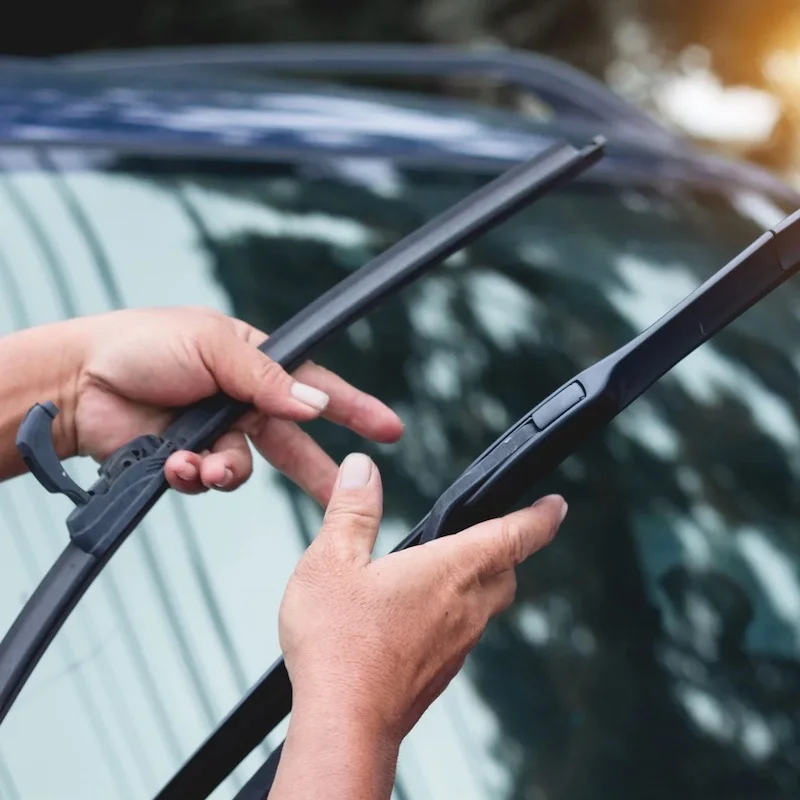
So, What’s Actually Making That Noise?
To fix the squeak, you have to know what’s causing it. It all comes down to something called slip-stick friction. Think about your sneakers squeaking on a clean basketball court—it’s the exact same idea. The rubber blade is meant to glide on a thin layer of water, dragging at a slight angle. When it gets to the end of its path and sweeps back, the blade’s edge should perfectly flip over to drag smoothly in the other direction.
The problem starts when something messes up that smooth glide. It could be not enough water, a dirty windshield, or a worn-out blade. The rubber momentarily sticks to the glass, the wiper arm keeps pushing, and the rubber stretches… then suddenly it slips forward. This happens incredibly fast, over and over, creating the vibration you hear as a squeak or a chatter. This is why just slapping on new blades doesn’t always work. The problem might be the glass or even the wiper arm itself.

A Pro’s Step-by-Step Guide to a Quiet Ride
Okay, let’s get down to business. In the shop, we don’t just guess and waste money. We follow a logical process, and you can do the exact same thing in your driveway.
Step 1: The Obvious Question
Before you even touch the car, ask yourself: is the windshield actually wet enough? A light mist or drizzle often isn’t enough to properly lubricate the blades. If you’re running your wipers on a mostly dry windshield, they’re going to complain. If the noise only happens in very light rain, the simple fix is to use your washer fluid to give them some help or just wait for the rain to pick up. It’s why many modern cars have rain-sensing wipers; they’re designed to wait until there’s enough water to do their job properly.
Step 2: A Serious Deep Clean (Glass and Blades)
If the squeaking happens even in a good downpour, your next enemy is contamination. Your windshield and wipers are constantly bombarded with road grime, tree sap, pollen, and all sorts of gunk you can’t even see. This stuff creates friction.
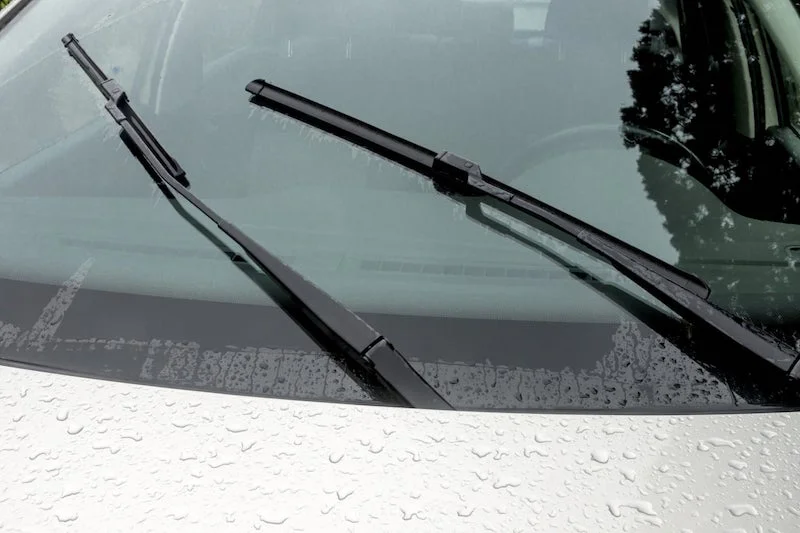
How to Properly Clean Your Wiper Blades:
This is more than a quick swipe. First, you’ll need a couple of clean microfiber cloths and a bottle of 70% isopropyl alcohol, which costs just a few bucks at any drugstore. Don’t even think about using other solvents; they’ll eat the rubber for lunch.
Gently lift the wiper arms away from the glass. Many will lock into a service position, but some won’t. Heads up! The arm is spring-loaded and can snap back with enough force to crack your windshield. I always place a thick, folded towel on the glass right under the arm, just in case. It’s a simple precaution that can save you a huge headache.
Next, wet your cloth with the alcohol, gently pinch the rubber blade, and wipe from one end to the other. You’ll probably see a lot of black gunk come off—that’s a mix of dirt and oxidized rubber. Keep wiping with a clean part of the cloth until it comes away clean. While you’re at it, feel the rubber edge for any nicks, tears, or hard spots. This gives you a clue about its condition.

How to Deep Clean Your Windshield:
A car wash is a good start, but it won’t remove bonded contaminants. After you wash and dry your windshield, run your fingertips across the glass. Does it feel gritty? If it’s not perfectly smooth, you need to go deeper. This is where a detailing clay bar comes in. It’s a pro-level trick that’s surprisingly easy to do.
You can grab a clay bar kit from brands like Mothers or Meguiar’s at any auto parts store for about $20-$25. The kit comes with a lubricant spray and the clay. Just spray a small section of the glass, flatten a piece of clay in your palm, and gently rub it back and forth over the lubricated area. You’ll feel it grabbing at first, but as it pulls the contaminants out, it will start to glide silently. Wipe away the residue and move to the next section.
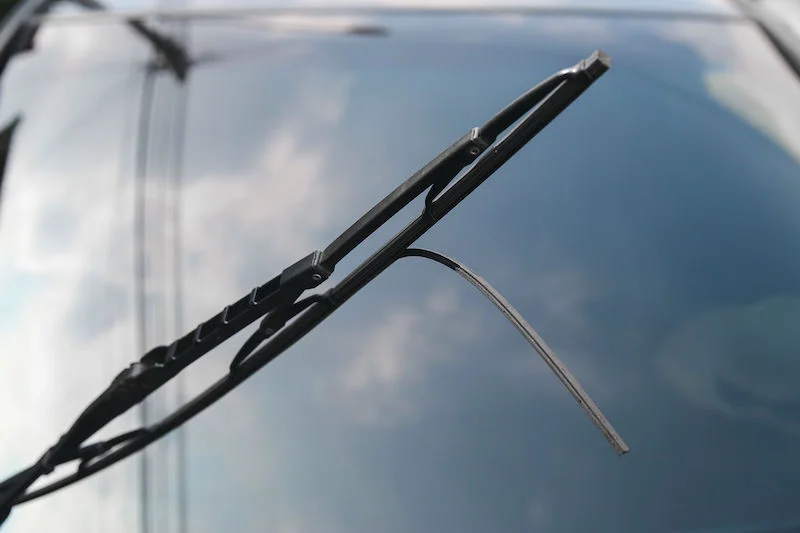
Plan for this whole deep-cleaning process to take about 30-45 minutes. It’s incredibly thorough and often solves the most stubborn wiper noise. Finish up with a good, ammonia-free glass cleaner.
Step 3: Time for New Blades? (And How to Choose)
If you’ve done all that cleaning and the noise is still there, it’s very likely the blades themselves are toast. Rubber breaks down from sun, heat, and cold. Look for tiny cracks, a stiff or hardened feel, or torn edges (often from being run over ice). Also, if a blade sits for a long time, it can get a ‘permanent set’—a curve that prevents it from flipping correctly.
So you need new blades. But which ones? You generally have three choices:
- Conventional Blades: These are the old-school, budget-friendly blades with a metal frame. They work fine, but they can get clogged with ice and snow. Expect to pay around $15 per blade.
- Beam Blades: These are the modern, flexible, one-piece blades. They have uniform pressure across the whole blade, which is great for performance, and they’re much better in winter weather. They cost a bit more, usually between $20 and $30+ a blade. For my money, I usually go with these.
- Hybrid Blades: These try to be the best of both worlds, with the performance of a beam blade but the look of a conventional one. They’re a solid mid-range choice.
Oh yeah, and you’ll see options for rubber or silicone blades. Silicone costs more but can last twice as long as rubber, so it might be a better value in the long run.
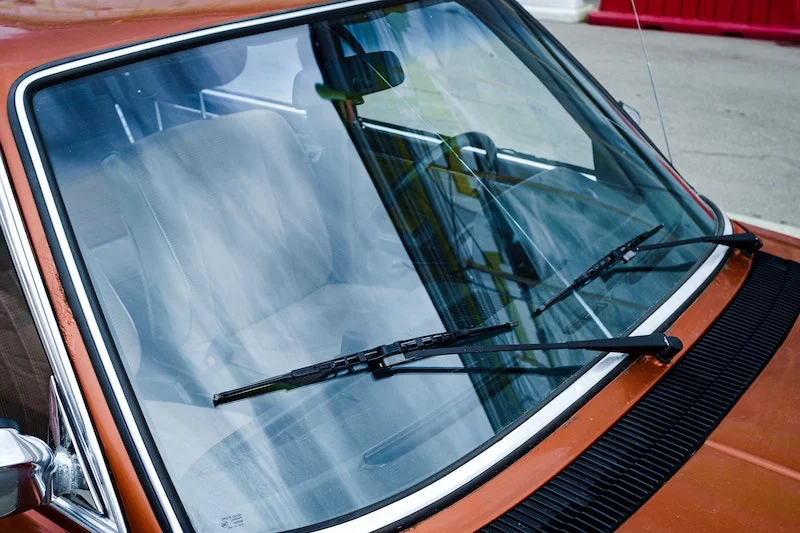
Quick tip: Don’t want to mess with those tricky plastic clips? If you buy your wipers at a big auto parts store, most of them will install them for you for free, right in the parking lot. Just ask!
Step 4: When All Else Fails… Check the Wiper Arm
Okay, so you’ve deep-cleaned everything and put on brand-new, high-quality blades, but they still chatter. Now we’re getting into the advanced stuff: the wiper arm itself might be the problem.
The arm is designed to hold the blade at a perfect 90-degree angle to the glass. Over time, or after getting bent in an automatic car wash or by heavy snow, that angle can get knocked out of whack. If the angle is off, the blade can’t flip properly, causing it to skip and chatter across the glass.
Now, this is where I have to give you some serious advice: do not just grab pliers and try to bend it back yourself. I’ve seen people try this, and it almost always ends badly. The wiper arm is connected to a complex and surprisingly delicate mechanism called the wiper transmission. Bending it with brute force can easily break something, and that’s a much more expensive repair.

This is a job for your trusted mechanic. But now you can go in sounding like you know what you’re talking about. Just tell them, “Hey, I’ve already deep-cleaned the glass and put on new blades, but the wipers are still chattering. Could you please check the wiper arm angle and contact pressure?” That tells them exactly where to look, saving time and making sure the real problem gets fixed for good.
Inspiration:
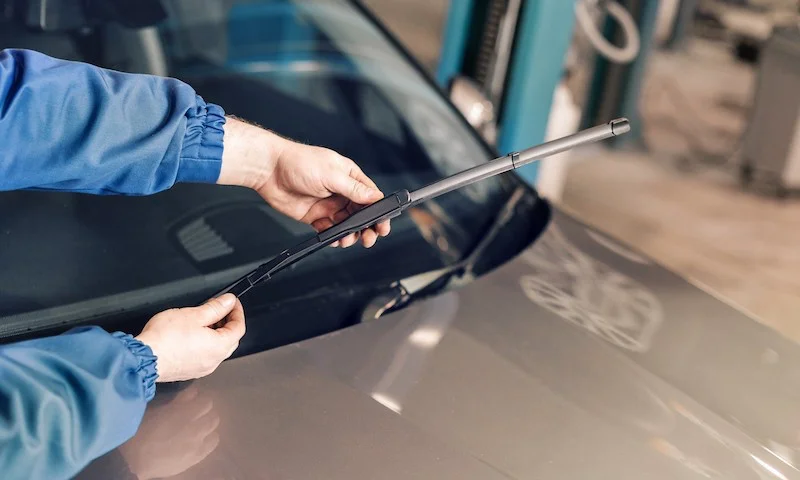
Beyond the squeak: Is it time to upgrade your blade material?
If cleaning and adjustments don’t solve the problem, the blade material itself might be the issue. Your choice here can make a huge difference in performance and longevity.
Natural Rubber: This is the industry standard found on most new cars. Brands like Bosch offer excellent rubber blades that are cost-effective and provide a perfect wipe when new. However, they are more susceptible to UV degradation and extreme temperatures, often needing replacement every 6 to 12 months.
Silicone Blades: The premium upgrade. A set of silicone wipers from a brand like PIAA or Rain-X can last two to three times longer. They are incredibly resistant to sun, heat, and cold. As a bonus, they often deposit a thin layer of hydrophobic coating on your windshield, causing rain to bead up and fly off, even when the wipers are off.










